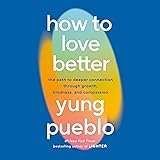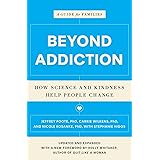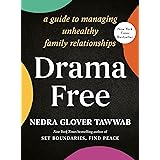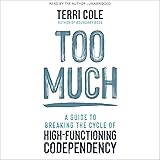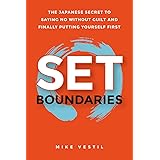The speaker in the accompanying video shares a deeply personal journey through online shopping addiction, a phenomenon that has become increasingly prevalent in our digital age. Many individuals find themselves caught in a cycle of endless browsing and impulse purchasing, often without realizing the underlying reasons or the full impact on their well-being and finances. Recognizing this issue is the crucial first step toward reclaiming control over one’s consumer habits and fostering a more mindful approach to life.
Understanding the Allure and Pitfalls of Online Shopping Addiction
Online shopping offers unparalleled convenience, allowing us to access a vast array of products from the comfort of our homes. However, this accessibility also presents a significant challenge, making it easier than ever to fall into patterns of compulsive buying. The speaker’s experience of receiving packages with forgotten contents, such as a back massager or various supplements, highlights a common symptom of this behavior.
From Impulse Buys to Empty Fulfillment: The Psychological Toll
The initial thrill of a new purchase often gives way to a sense of emptiness, especially when items are bought impulsively. While anticipation for a desired item once brought genuine joy, the speaker notes that constant, unplanned acquisitions felt “hollow and meaningless.” This shift can be attributed to the brain’s reward system, where fleeting dopamine hits from notifications or new purchases override sustained satisfaction.
Studies indicate that approximately 5-8% of the adult population in developed countries struggles with compulsive buying behavior, often fueled by underlying anxiety, depression, or a need for emotional regulation. Online platforms exacerbate this by providing immediate gratification and endless opportunities for escape, turning shopping into a coping mechanism rather than a deliberate act of acquiring needs or true desires. This behavior is a search for control and momentary pleasure amidst challenging times, yet it rarely delivers lasting contentment.
Societal Pressures: Hyper-Materialism and the Social Media Echo Chamber
Our society often equates success and happiness with material possessions, a concept known as hyper-materialism. Social media platforms amplify this by constantly showcasing new products, trends, and lifestyles centered around acquisition. The speaker candidly admits that posting about purchases garnered positive feedback, further feeding the addictive cycle and perpetuating the belief that “more is better.”
This phenomenon creates an echo chamber where excitement for new items convinces others they need them too, driving an unsustainable consumption loop. The speaker rightly observes that “hurt people hurt people,” suggesting that personal struggles with materialism can inadvertently contribute to a larger societal problem. Conversely, “healed people heal people,” highlighting the potential for positive influence through changed behavior.
The Environmental Footprint of Excessive Consumerism
Beyond personal financial and psychological costs, excessive online shopping carries a significant environmental burden. The constant demand for new products fuels industries with large carbon footprints, from manufacturing and packaging to shipping and waste disposal. Many items, particularly in fast fashion or disposable electronics, are designed with planned obsolescence, meaning they are intended to be replaced quickly.
Embracing sustainability, as the speaker began to do, involves moving beyond merely recycling as a last resort. It emphasizes reducing overall consumption and reusing items whenever possible, adhering to the “reduce, reuse, recycle” hierarchy. Supporting brands committed to ethical sourcing, fair labor, and durable products can also mitigate the environmental impact of our purchasing choices.
Shifting Perspective: Practical Steps Towards Healing and Mindful Consumption
The path to overcoming online shopping addiction begins with a crucial shift in perspective, recognizing that such behavior is detrimental to both personal well-being and the planet. This awareness empowers individuals to take actionable steps toward healthier habits.
Curating Your Digital Environment for Wellness
Our digital feeds significantly influence our desires and behaviors. A key strategy involves intentionally pruning social media to remove triggers. The speaker stopped following accounts that constantly promoted new items, shopping guides, or “Amazon dupes” – not out of judgment for content creators, but for personal well-being. Instead, seeking out inspiring accounts focused on food, travel, spirituality, or sustainability (like Venitia, mentioned in the video) can foster different interests and reduce the temptation to buy.
Limiting screen time and deleting apps like TikTok or Instagram for extended periods can also serve as effective digital detox strategies. This creates space for other activities and reduces exposure to persuasive marketing and aspirational content that often fuels impulse purchases.
Cultivating Intentional Purchasing Habits
Developing mindful purchasing strategies is vital for breaking the cycle of compulsive buying. The speaker adopted a “month-long wait” rule before buying anything new, asking, “Is this something I want to own forever?” This rarely led to a purchase, demonstrating the power of delayed gratification and critical reflection. This practice helps distinguish between genuine needs or long-term desires and fleeting impulses. For example, research suggests that waiting just 30 days before making a non-essential purchase can reduce impulsive spending by over 60%.
Prioritizing independent brands and designers also aligns with more ethical consumption. These businesses often have smaller production scales, prioritize quality over quantity, and foster a deeper connection between consumer and creator. This approach supports a more circular economy and moves away from the anonymous, mass-produced culture of large corporations.
Finding Authentic Joy: Beyond Material Possessions
True happiness and fulfillment often stem from experiences, relationships, and personal growth rather than material accumulation. The speaker actively sought “real sources of dopamine,” such as engaging in outdoor activities like walks, experiencing cold plunges, practicing gratitude, meditating, and spending more time in nature. These activities provide genuine mood boosts and reduce the reliance on shopping as a temporary emotional fix.
Furthermore, engaging in introspection and personal development, like the speaker’s “two years of intensive shadow work” and various alternative therapies, addresses deeper emotional issues that might contribute to addictive behaviors. This journey of self-discovery and healing, though non-linear and imperfect, helps individuals find sustainable sources of contentment that transcend the fleeting satisfaction of a new purchase.





